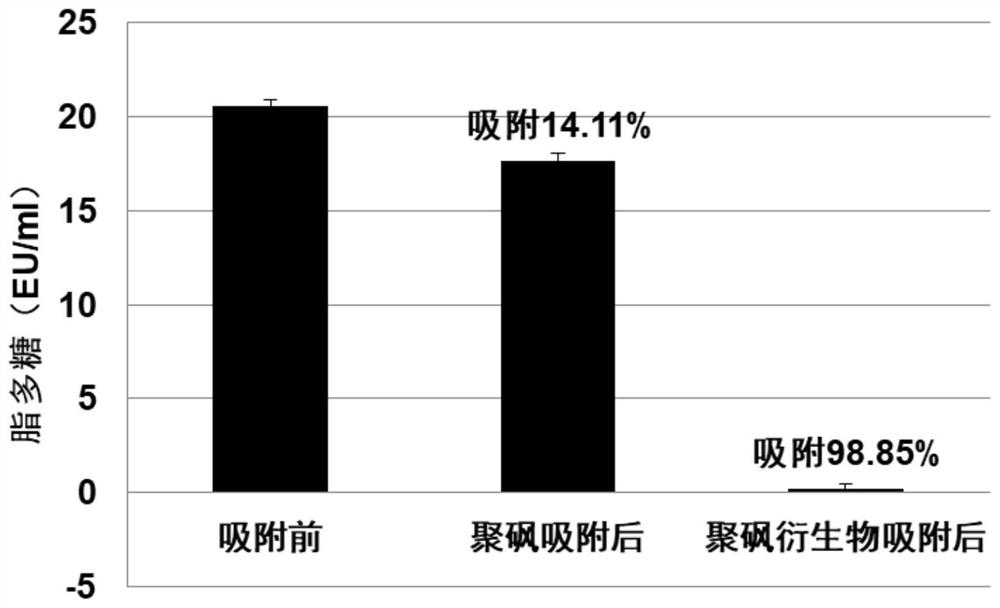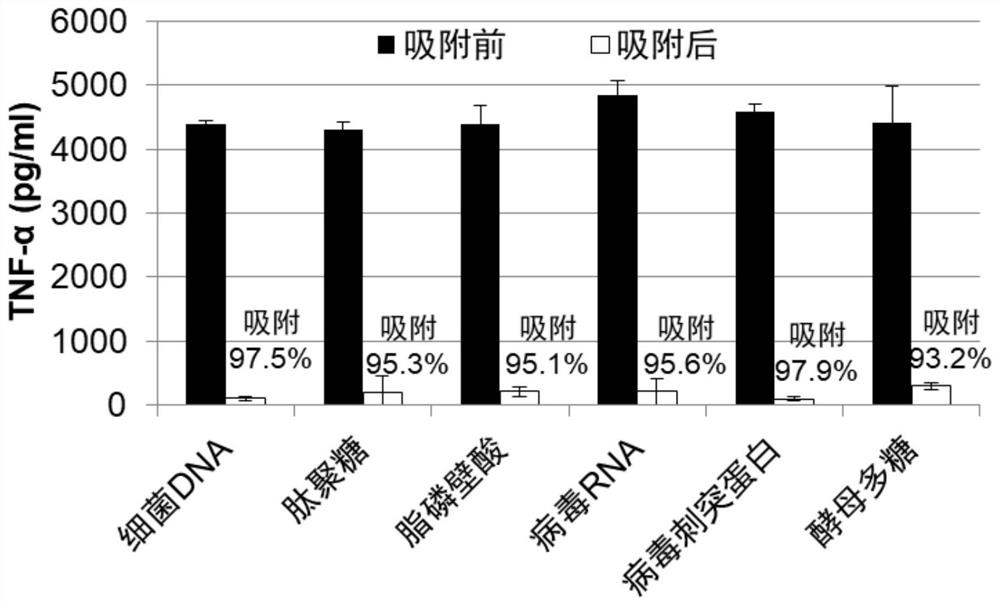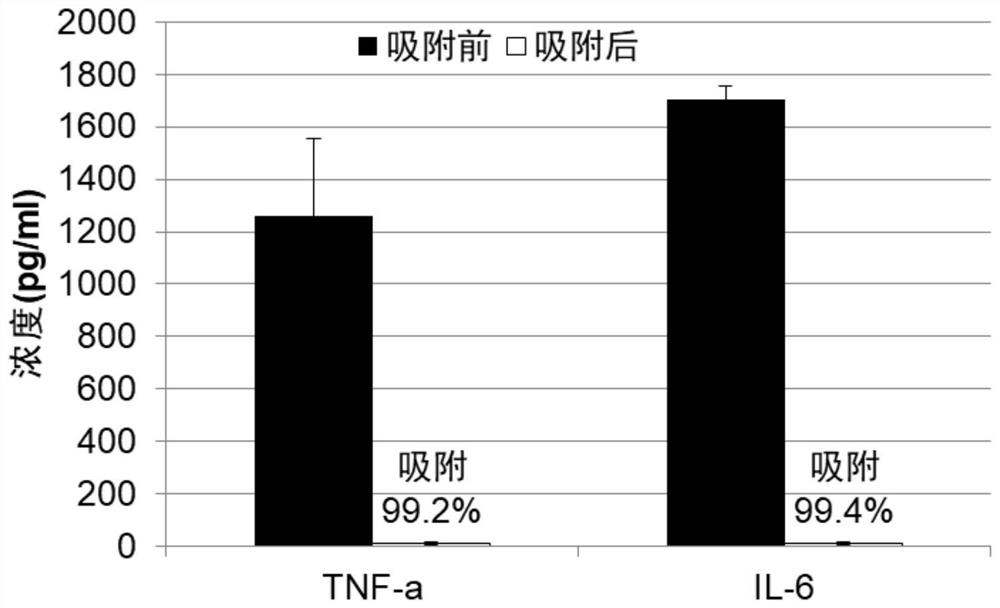Polysulfone derivative and preparation method and application thereof
A derivative, polysulfone technology, applied in the field of medicine, can solve rare problems and achieve the effects of good adsorption, good application prospects and good blood compatibility
- Summary
- Abstract
- Description
- Claims
- Application Information
AI Technical Summary
Problems solved by technology
Method used
Image
Examples
Embodiment 1
[0049] Embodiment 1: the preparation of polyamine functional group
[0050] 1.1 Experimental method:
[0051]
[0052]
[0053] Weigh 50g of compound 1 and dissolve it in 200ml of ethanol, add 88.6g of Boc 2 O, react at room temperature. After the reaction was complete, the solvent was concentrated under reduced pressure to obtain 90 g of a yellow oil (compound 2). Weighed 60g of Compound 2 and dissolved it in 600ml of saturated methanolic ammonia solution, added 48g of Raney nickel, reacted under 4MPa hydrogen at 90°C for 48 hours, filtered, concentrated under reduced pressure to remove the solvent, and obtained a blue oil (Compound 3). Compound 3 was completely dissolved in 250ml of ethanol, 36ml of acrylcyanide was added, reacted at 40°C for 3 hours, concentrated under reduced pressure, and dried to obtain a golden yellow oil (compound 4). Weigh 5g of compound 4 and dissolve it in 50ml of dichloromethane, add 4ml of triethylamine and 6.76g of 3,4-dimethoxyphenylpro...
Embodiment 2
[0056] Embodiment 2: Preparation of polysulfone derivatives
[0057] 2.1 Experimental method: Dissolve 1g of polyethersulfone in 10ml of dichloromethane, then add 0.01mmol of 1,4-dichloromethoxybutane and 0.1ml of tin tetrachloride, and react at 25°C for 3 hours. Add 5ml of ethanol to precipitate the precipitate, wash with N,N-dimethylformamide, hydrochloric acid, ethanol and water successively until neutral, and dry to obtain chloromethylated polysulfone. Dissolve chloromethylated polysulfone in 10 ml of dichloromethane, add 2.5 ml of ammonia water dropwise, and continue the reaction for 4 hours. The organic layer was taken, washed with 10ml of hydrochloric acid and 10ml of sodium carbonate solution, concentrated and dried to obtain aminated polysulfone. Aminated polysulfone was dissolved in 15 ml of tetrahydrofuran, 5 mg of polyamine functional group (Example 1) was added, and reacted at room temperature for 4 hours. Then, 2.5 ml of acetic anhydride and 5 ml of triethylami...
Embodiment 3
[0061] Example 3: Detection of adsorption performance of polysulfone derivatives on bacterial lipopolysaccharide
[0062] 3.1 Experimental method: Prepare 1 μg / ml bacterial lipopolysaccharide solution, take 10 ml and place it in a stoppered Erlenmeyer flask, weigh 1 g of polysulfone derivative and put it into the bottle. The bacterial lipopolysaccharide solution was prepared in the same way, and 1 g of polysulfone was added as a control group. Shake and adsorb in a constant temperature oscillator at 37±1°C for 2 hours. According to the "Chinese Pharmacopoeia" 2015 Edition Bacterial Endotoxin Inspection Method, use Limulus reagent (dynamic turbidity method) to detect the content of bacterial lipopolysaccharide before and after adsorption, and calculate the adsorption Rate.
[0063] 3.2 Experimental results: see the results figure 1 . The adsorption of polysulfone to lipopolysaccharide is very weak, and the adsorption rate is only 14.11%, while the adsorption rate of polysulf...
PUM
 Login to View More
Login to View More Abstract
Description
Claims
Application Information
 Login to View More
Login to View More - R&D
- Intellectual Property
- Life Sciences
- Materials
- Tech Scout
- Unparalleled Data Quality
- Higher Quality Content
- 60% Fewer Hallucinations
Browse by: Latest US Patents, China's latest patents, Technical Efficacy Thesaurus, Application Domain, Technology Topic, Popular Technical Reports.
© 2025 PatSnap. All rights reserved.Legal|Privacy policy|Modern Slavery Act Transparency Statement|Sitemap|About US| Contact US: help@patsnap.com



